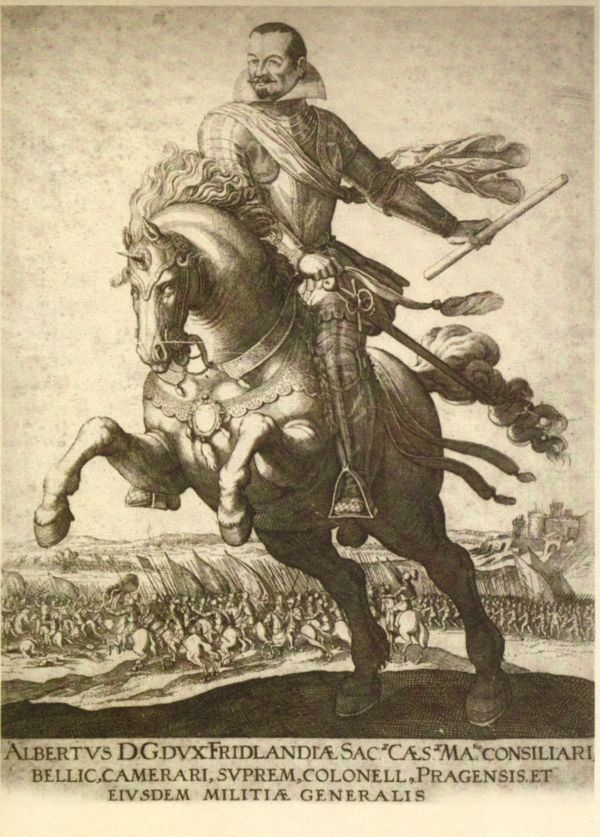Moje nejoblíbenější historická postava AzV.
25.4. 1626 Battle of Dessau
Categories: Years of war and revolution , Calendar

Albrecht of Wallenstein's well-chosen tactics won the Imperial Army one of the most important clashes of the Thirty Years' War. Count Mansfeld had to flee, losing four thousand men. The Battle of Dessau took place on April 25, 1626.
After the Ligist general Tilly had met the lone Duke of Brunswick at the Battle of Stadtlohn and defeated him head on, the German Protestant cause seemed to be completely lost. But that changed the moment King Christian IV of Denmark entered the Thirty Years' War in 1625. He sided with the Protestants, who were losing one battle after another. They had high expectations because Denmark was prosperous at the time.
The plan was that Kristian IV would attack the army led by Johann Tilly in the Rhineland. The Protestant general Peter Ernst II Count Mansfeld in turn led an army to Magdeburg with the aim of breaking the enemy line west of the Elbe River. The Imperial-Ligist troops were under the command of the commander-in-chief and also the wealthy Moravian nobleman Albrecht of Wallenstein, who rose to be at the head of the army.
Mansfeld attacked the Dessau, the most important crossing between Magdeburg and Saxony. But Wallenstein learned of this and was able to secure a bridgehead on the banks of the Elbe River by calling his troops to the eastern side. He had about 20,000 men at his disposal. Mansfeld had a larger army, but was still unable to break through the imperial defences. Moreover, Wallenstein occupied the forest and surrounded the enemy.
Mansfeld ordered the attack at 6 a.m. on 25 April 1626. The battle lasted six hours and Wallenstein was able to take full advantage of the prepared tactics. He called cavalry and infantry from the forest to fight. At the same time, he ordered an attack from the bridgehead as well. Mansfeld was forced to retreat. In addition, a gunpowder wagon exploded in his camp, causing chaos. Mansfeld lost about four thousand men.
After defeats by the Ligist and Imperial armies at Dessau and Lutter during 1626, the Habsburg camp gradually took control of almost all of Germany and Denmark with the peace concluded on 22. May 1629, Germany gave up all its ambitions.
"The defeat of the Protestants in Germany was confirmed by the Edict of Restitution issued by Ferdinand II on March 6, 1629. It meant a return to the property relations in the Empire of 1552 (the Treaty of Passau), which in effect would have meant that the Protestant Estates would have had to surrender their recently seized properties. The restitution edict can be seen as a Catholic interpretation of the religious settlement of 1555," Drahomír Suchánek and Václav Drška write in their book Church History - Modern Times.
Albrecht von Wallenstein lived to be fifty years old. He was successful in the Falklands, Danish and Swedish wars. His army numbered up to 100,000 men. His greatest opponent was the aforementioned Christian IV.
Drahomír Suchánek and Václav Drška.
The article is included in categories:



